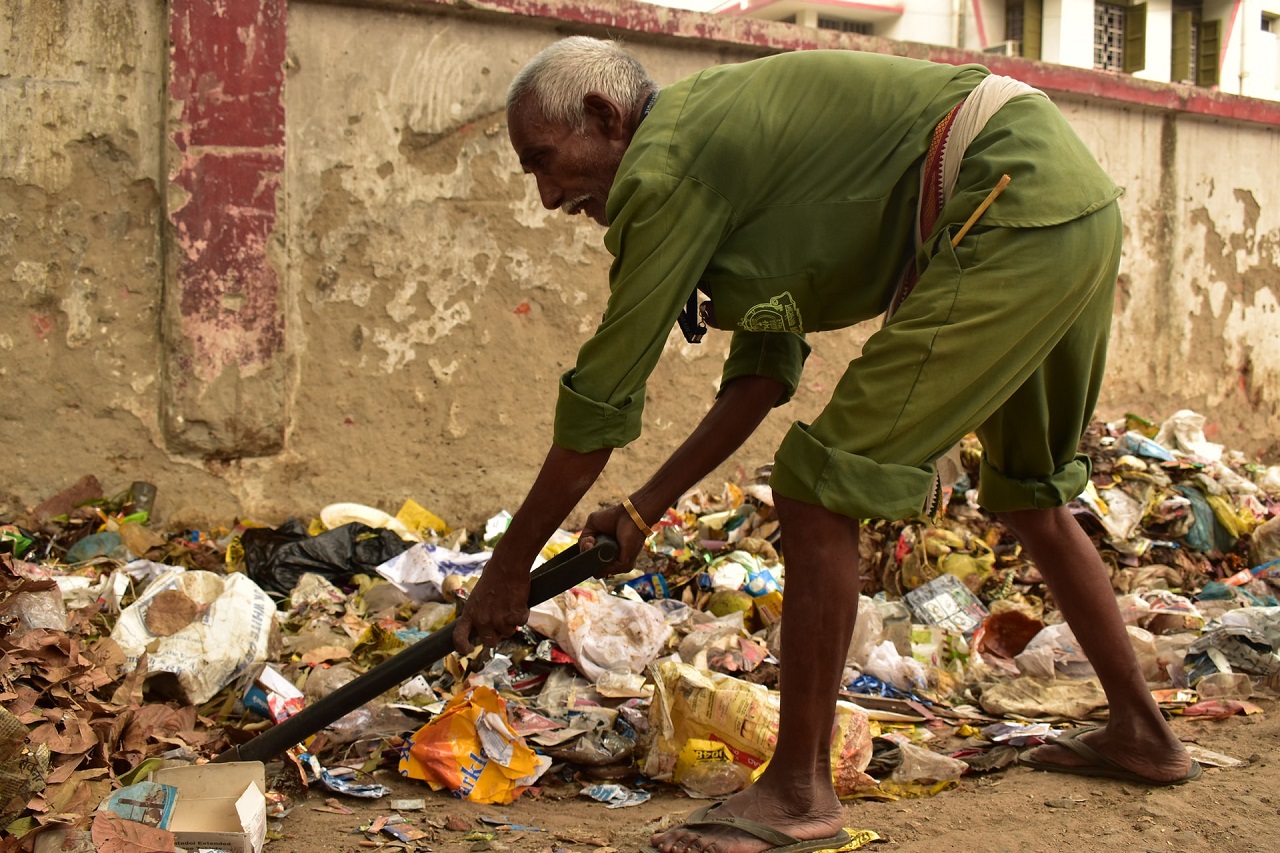What is it and why we need to act now
While there is no question of the importance of raising awareness about menstrual health and hygiene, there is always a rebuttal to raise the issue of waste produced as a result of unhygienic sanitary napkin disposal. Both of these issues are part of our list of concerns and one cannot be ignored for the sake of the other.
It calls for an all-encompassing solution, because the current practise of disposing of menstrual hygiene products existing in India is only going to aggravate the garbage situation in the future.
Approximately 200 tonnes of sanitary napkin waste is generated daily for a population of 350 million menstruating women in India, assuming that 35 percent of women regularly use sanitary napkins at an average of 8 pads per month.
Even when sanitary napkin disposal constitutes only less than 1% of the total amount of plastic waste produced, it does not amount to less than 25000 tonnes per day, which, due to its enormous size, is in no case inconsequential. It is therefore no mystery that we are in dire need of sustainable alternatives for disposing of sanitary pads in India.
Thanks to sustained effort at many tiers, the feminine hygiene industry is growing rapidly, but this is creating a detrimental effect on the waste management industry, where 85 per cent of the waste is not managed due to inadequate efforts by the public health department.
This advocates for a comprehensive examination of the sanitary napkin disposal methods. A trend is observed in the methodologies according to the area inhabited by the woman. Most women residing in metropolitan areas dispose of sanitary napkins in a dustbin that ultimately ends up in landfills, while rural women prefer to wash their napkins and dump them in a pit.
Methods of disposal are also heavily reliant as to whether the napkin was disposed of at home or at work/school. In public washrooms, often due to poor infrastructure, sanitary napkins are flushed or left in corners or in other open areas. Few other women actually burn discarded sanitary napkins. This scene certainly indicates making progress to educate the masses on how to dispose of sanitary pads at home is necessary.
The Indian Government’s CPCB has set standards for the dumping of sanitary waste and has clarified the responsibility of all relevant parties in the disposal of the product. Strongly advised methods for disposing of sanitary napkins vary depending on the area. For example, in rural areas low-cost incinerators are used and sanitary napkins are produced preferably without SAP. Electric incinerators are used in rural or urban setups. Some other methods are:
- High temperature incinerator for bio-waste – Urban setup with central collection and disposal with other bio waste.
- Deep burial – Rural setup – Compostable materials only
- Composting – Compost site – Compostable materials only
- Pit burning – Rural area
Per the regulations, waste can be disposed of by incineration or by disposal in landfills. Both of which are entirely feasible, and have to be applied consistently throughout all stages. In particular on rural fronts, the necessary facilities and infrastructure should really be made accessible. While these techniques sound perfect, they also have their very own challenges.
In general, incineration may not be the recommended approach, since carbon contained in fossil fuels is released to the atmosphere among other pollutants, whereas ground filling is a significant cause of waste and plastics have not been degraded for many years. We therefore ought to find alternative ways to manage our sanitary napkin waste either by storing it or using environmentally friendly items.
Though solutions such as recycling and composting exist, the handling of used sanitary napkins continues to be an issue across India since these processes have still not been widely accepted. There are, however, a few actions that a person may take to support the cause.
When one lives in an urban area, the best way of disposing of any kind of sanitary napkins will be to incinerate in a central incineration plant which are used by hospitals to dispose of sanitary and bio-waste. One must explore and locate the nearest central incineration device in their town. In order for this system to be successful, the separation of sanitary waste at person level, the processing at community scale and incineration at central incineration facilities will be necessary.
When one of them disposes of another waste in a garbage bin, the least they can do is cover the used sanitary napkin in a plastic wrapper supplied by most of the pad companies. This is vital to the hygiene and welfare of waste collectors.
In rural communities in which there is a shortage of segregation, incineration, as indicated by CPCB, will be the safest choice. Low-cost manual incinerators or electrical incinerators should be used for this function. This, as we can all bear in mind, will not solve the problem, it can only manage it better. There is space for a lot of progress in the future.
As customers are more mindful of the environmental effects and continue to make responsible buying choices, some companies have taken advantage of that fact either by falsely stating that their goods are environmentally conscious or by misleading consumers with words that they do not fully comprehend. Therefore, the few that pretend to be organic sanitary pad producers must be cross-checked.
The need for an hour is knowledge, understanding and availability of environmentally sustainable practices when it comes to treating menstrual waste effectively. When that’s taken care of, it’ll be easy for us to make a green change.







